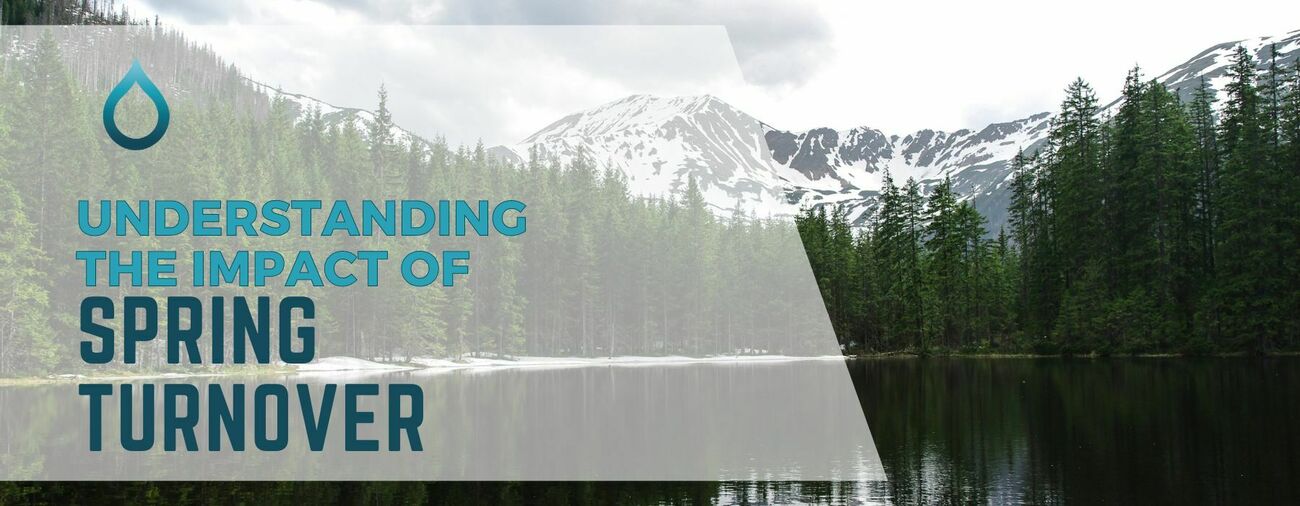
Understanding the Impact of Spring Turnover
Spring turnover is a natural event that occurs in ponds. It marks the transition from winter to spring. During this time, ponds come to life with new energy and activity. Spring turnover is essential for the life cycle of ponds.

Spring turnover, also called lake or pond mixing, is a natural process that occurs when the water in a pond or lake mixes vertically. During winter, the water in the pond separates into layers based on temperature. The upper layer is called the epilimnion, which is warmer and less dense, while the lower layer is called the hypolimnion, which is colder and denser. These layers remain separate due to differences in temperature and density.
As spring arrives, the sun warms the pond's surface; eventually, the surface layer becomes as warm as the bottom layer. This causes the water to mix, as wind and changes in air pressure create currents that push the warmer, less dense water down while bringing the colder, denser water up.
Spring Turnover Impact
While spring turnover is a natural and essential process in ponds and lakes, it can negatively impact or alter water bodies. Some potential adverse effects of spring turnover include:
-
Fish Kills: Spring turnover can mix oxygen-depleted water from the pond bottom with oxygen-rich surface water, rapidly dropping oxygen levels. This can suffocate fish and other aquatic organisms, especially in poorly oxygenated ponds.
-
Nutrient Release: Mixing water layers during spring turnover can release nutrients, such as phosphorus and nitrogen, from the sediment into the water column. This can fuel algal blooms, leading to poor water quality and reduced oxygen levels.
-
Habitat Disruption: Spring turnover can disturb the water column's natural stratification, affecting species' distribution and potentially disrupting aquatic organisms' spawning and feeding behaviours.

However, mitigating the negative impacts of pond spring turnover involves proactive management strategies to minimize the potential harm to aquatic life and water quality. Here are some ways to reduce these impacts:
-
Aeration: Installing bottom-up aeration systems can help maintain oxygen levels in the water and prevent the development of anoxic (Oxygen deficient) conditions during turnover. Various energy-efficient aeration systems, such as Electric Aeration systems, Solar Energy Aeration Systems, and Windmills are available and designed to aerate any pond size or shape.
-
Stratification Management: Implementing strategies to manage stratification, such as using a fountain or surface spray systems to create surface agitation, can help prevent the development of anoxic conditions in the bottom layer.
-
Nutrient Management: Implementing nutrient management strategies, such as reducing nutrient inputs from runoff and maintaining a healthy balance of aquatic plants, can help reduce nutrient loading in ponds and minimize the risk of algal blooms. Using natural water treatments is an excellent option to address nutrient pollution at its source and have clean and clear water.
-
Fish Stocking: Stocking ponds with species tolerant of low oxygen levels, such as catfish or carp, can help mitigate the risk of fish kills during turnover.
Monitoring and Management: Regular monitoring of water quality parameters, such as oxygen levels, temperature, and nutrient concentrations, can help identify potential issues early and allow timely intervention to prevent adverse impacts.

In conclusion, while spring turnover is a natural and necessary process, it can negatively impact pond ecosystems if not managed carefully. Pond owners can help maintain a healthy and balanced pond ecosystem by understanding the process and implementing appropriate prevention and mitigation measures.